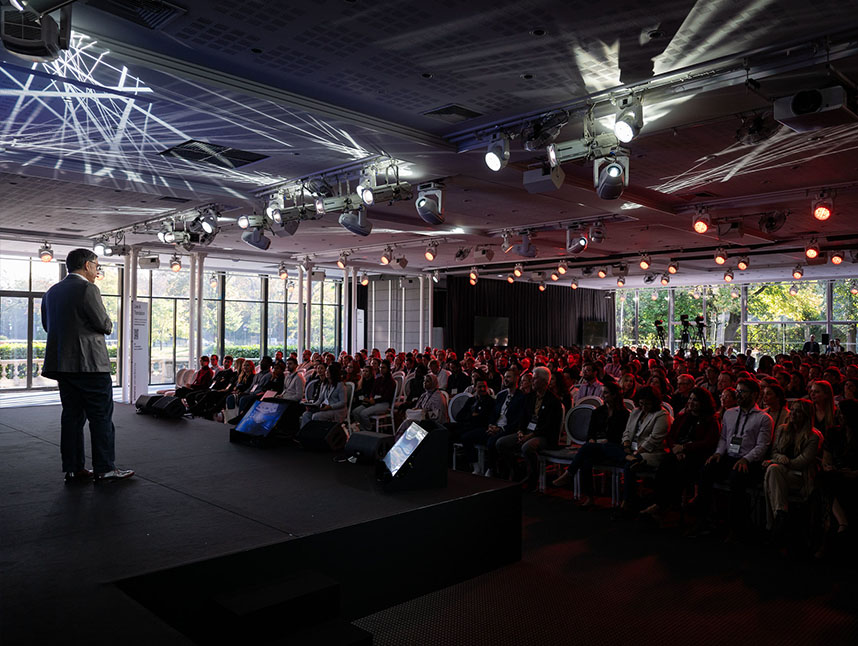Survival in the age of digital change: strategies, tactics and opportunities for regional newspaper publishers
Waiting for better times is not an option for newspaper publishers. Digital change and demographic change will fundamentally change business over the next few years. That is why it is now important to look to the future and develop new digital business models.
That was the clear message from Dr. Christoph Mayer in our Webinar on the topic “Digital change or downfall: How newspapers successfully master digital change”. Dr. Christoph Mayer, partner at the media consulting firm SCHICKLER, spoke in a webinar with Stephan Heck, co-founder and managing director of Purple.
In this article, you will learn about the current situation of newspaper publishers and in the coming years. This results in options for action, strategies and tactics with which newspaper houses can master the development.
The old status quo and the coming future: What challenges does the newspaper industry face?
In his keynote speech, Dr. Christoph Mayer first analysed the situation of newspaper publishers. The figures speak for themselves. In recent years, print editions have mostly declined evenly and only slightly. As a rule, “between one and five percent” per year. Newspaper houses were still able to adapt to this. They raised prices and were able to achieve further growth in sales revenues.

This path is likely to be exhausted soon. First, price increases cannot be implemented indefinitely on the market. The second, more dramatic reason is found in the age structure of subscribers.
A dangerous cycle
“Print subscribers are significantly outdated,” said Dr. Christoph Mayer. In the next five to ten years, 40 percent of print subscriptions would be “on fire.” This starts a cycle: print circulation falls, revenues fall, delivery density decreases, districts become uneconomical. Publishers are forced to shut down these districts because remaining subscribers can no longer be supplied economically.
“This cycle,” says Mayer, “will have a dramatic impact on the print business over the next few years.” For the past two years, some publishers have reported falling sales revenues. That is the new situation. This development will intensify in the coming years. Subscriber numbers continue to decline. Dr. Christoph Mayer uses the image of a “flow breakdown,” which makes print uneconomical. According to Dr. Christoph Mayer, some titles would reach this point earlier, others a bit later, but everything takes place within a time frame of five to ten years.
Mayer explained this using the example of publishers from various regions and the development of their subscriber figures since 1995. His forecast can be illustrated by a title from the region of Southwest Germany. The number of print subscribers fell from just under 160,000 in 1995 to around 90,000 today. Depending on the scenario, this figure could fall to 40,000 or even 20,000 print subscribers by 2030. A high edition usually means that a large area has to be supplied. “If the circulation decreases, the area is thinning,” says Mayer. “Delivery is becoming more and more expensive as a result.” And then simply uneconomical.

This development can teach you how to creep. The question is: Where do I actually want to go? If print becomes uneconomical, what does a company, a regional publishing house, that works purely digitally look like?
The transformation doesn't take place at the push of a button — how can you gain digital reach and manage print at the same time?
If you take a close look at the average cost structure of a regional newspaper publisher dominated by print and compare it with the cost structure of a publishing house that focuses entirely on digital, the transition to digital initially looks promising. The largest share of costs, namely sales, in particular delivery, and production, is eliminated.

It would be nice if the problem could be solved so easily. But that is currently wishful thinking. Because publishing houses first need a correspondingly high density of digital subscriptions before they can switch over. They are a long way from that goal. Publishing houses currently have around a quarter to a third of the subscribers they need to be able to work economically digitally.
A newspaper house must therefore grow into the digital world and manage the old print business at the same time. The transformation will take a toll on the entire organization. The learning and change phase must now be initiated in order to set up new processes and technology. Only then can publishers achieve digital subscription growth in good time before the print business breaks away.
“Now, 2024, 2025, is the time when I have to massively drive change forward,” says Christoph Mayer.
If publishers lose this time, they are forced to fall back on reserves later.
One of the challenges is to familiarize print subscribers with the digital product and to find out which product readers really want. This is not yet clear. However, it is clear that reader loyalty and the value of the digital product differ significantly from a conventional print product. Print cannot simply be transferred to digital. In digital, an article sometimes has a higher value for users than the entire newspaper because it is a topic that readers cannot get elsewhere.
New thinking: From digital first to print last and what that really means
At present, many publishing houses still work according to a principle in which the print edition dictates what the digital product will look like in the end. Articles are often written for the printed newspaper. This not only limits the length of the articles, but also the time at which they are published.
Mayer proposes a different approach here, centered around the "Pure Digital Newsroom". There, people think in terms of topics instead of pages. The length of an article is based on the topic, ideally on the information needs of the reader. In the digital newsroom, there is no longer just one deadline for a page that has to go to print at a certain time of day, but several per day. The printed newspaper itself is controlled from the digital production.
There are other important components for success in the digital world. Online, content must be written differently and be geared more towards the needs of users. In the mornings and evenings, there is a greater receptiveness to topics that are not only determined by topicality. This should have an impact on the design of products. Newsletters and personalization offer many ways to make content visible that would otherwise be easily overlooked. And support from artificial intelligencehelps to develop new texts and formats from content that has already been produced. Algorithms can be developed to drive forward the automation of the printed newspaper without having to rewrite or edit digital content or write for the newspaper first again.
Into the future after print
Production for digital offers many new possibilities beyond the limitations of the printed newspaper. Users and their needs are at the heart of this development. "People want to understand, they want to understand contexts, they want background information," says Mayer. This brings a shift from pure topicality and current affairs journalism to stories that help to classify or inspire.
The importance of traditional reporting is therefore declining in the digital world. This is having a lasting impact on editorial processes. In order to ensure the necessary topicality, breaking news teams are created, for example, while other topics are produced beyond pure topicality and are sometimes ready days before publication.
E-paper and Digital Edition as bridges to the digital subscription
The e-paper remains an important tool as publishers move into the digital future. E-papers are often the first step for print readers and get them used to using a digital product. Christoph Mayer therefore recommends always providing print subscribers with access to the e-paper. This makes the changeover easier after a possible discontinuation of the print edition.
At the same time, e-papers are showing enormous growth rates with a manageable investment. They also help to break new ground - right up to the development of a digital edition such as Purple offers alongside many e-papers.
As mobile devices are now the main source of digital content, an e-paper with a print layout is not the best way to present it. Digital editions are a new type of product that can offer users orientation in a world of information overload.
Opportunities lie in the countryside
In the digital future, the problem of delivery in rural regions will no longer apply. Offering digital products for rural regions therefore offers enormous growth opportunities for publishers. They can establish themselves there as relevant media and provide people with information that they do not already know from other sources.
Conclusion
Regional newspaper publishers are facing significant challenges due to digital and demographic change. Newspaper publishers must develop new digital business models. With declining print subscriber numbers and rising delivery costs, print is becoming uneconomical. The transformation to digital models must be initiated now in order to achieve a sufficient number of digital subscriptions in good time. Successful digital transformation also involves new approaches to editorial processes and a stronger focus on user needs.
Purple supports publishers on their way into the digital future. With Purple, you can publish your articles not only on high-performance websites and in apps, but also as e-papers and on social media. Purple is your companion on the path to digital transformation.






%201.svg)











